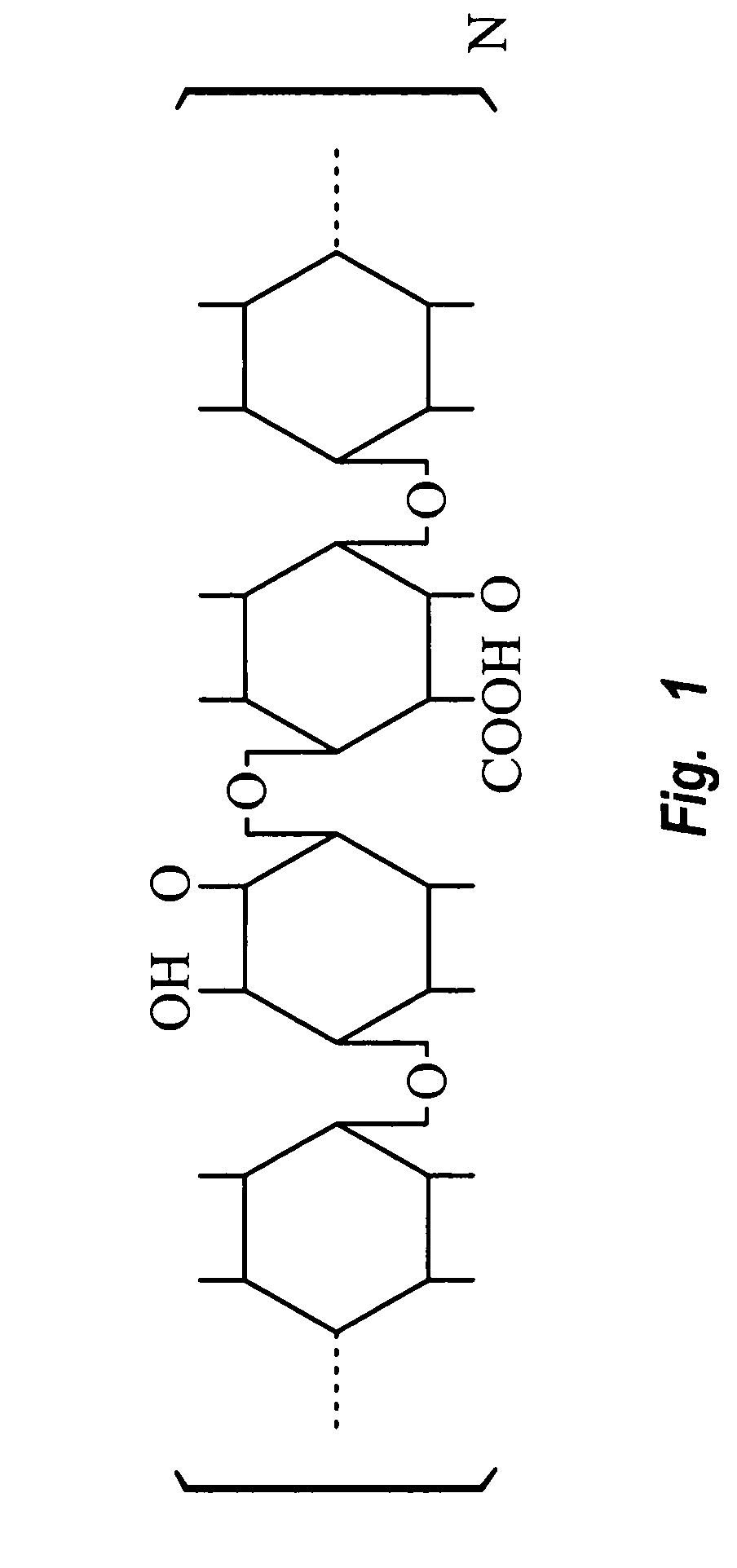Hemostatic material
a technology of hemostatic material and hematopoietic material, which is applied in the direction of pharmaceutical delivery mechanism, organic active ingredients, bandages, etc., can solve the problems of inability to enhance the coagulopathic process, time-consuming and labor-intensive conventional approaches to dealing with blood loss, and inability to control bleeding in coagulopathic patients. , to achieve the effect of fast hemostasis, convenient carrying and storage, and stable material
- Summary
- Abstract
- Description
- Claims
- Application Information
AI Technical Summary
Benefits of technology
Problems solved by technology
Method used
Image
Examples
example 1
[0080] The preferred hemostatic material of the invention comprise a soluble hemostatic material with the following structural formula:
wherein n is 2-20000. The preferred method for making the preferred material of the invention comprises the steps of:
[0081] 1) Activating Treatment: [0082] a) Placing two liters of sodium hydroxide, two liters of sodium carbonate, and one liter sodium hypochlorite in to the internal bladder of a reaction vessel, then adding in an appropriate amount of pure water and stirring until the ingredients are totally dissolved and a pH value of 8 to 9.5 is achieved. Then, pour 60 liters of 95% ethyl alcohol in to the internal bladder and mix. Then turn on the stainless steel heater and keep the temperature of the internal bladder at 25 to 28° C. and hold for 10 hours. [0083] b) Put 80 meters clinical use gauze into the mixed solution in the reaction vessel. At this point, the temperature of the external body should be 30° C.±3° C., the temperature of the ...
PUM
| Property | Measurement | Unit |
|---|---|---|
| temperature | aaaaa | aaaaa |
| temperature | aaaaa | aaaaa |
| temperature | aaaaa | aaaaa |
Abstract
Description
Claims
Application Information
 Login to View More
Login to View More - R&D
- Intellectual Property
- Life Sciences
- Materials
- Tech Scout
- Unparalleled Data Quality
- Higher Quality Content
- 60% Fewer Hallucinations
Browse by: Latest US Patents, China's latest patents, Technical Efficacy Thesaurus, Application Domain, Technology Topic, Popular Technical Reports.
© 2025 PatSnap. All rights reserved.Legal|Privacy policy|Modern Slavery Act Transparency Statement|Sitemap|About US| Contact US: help@patsnap.com



